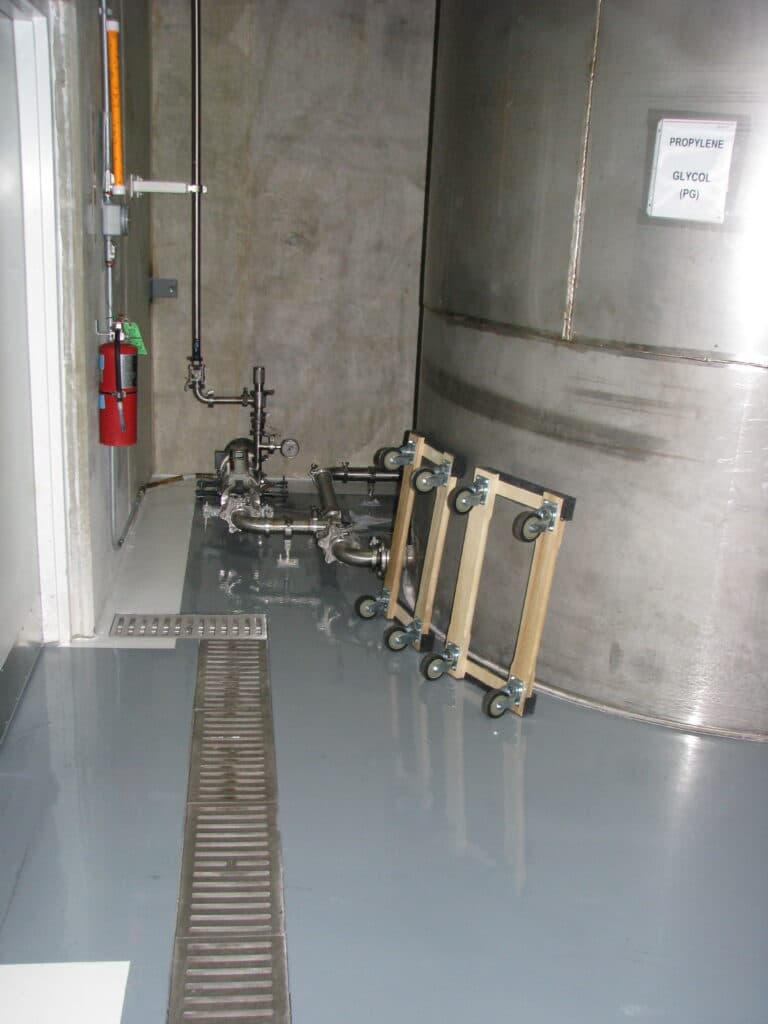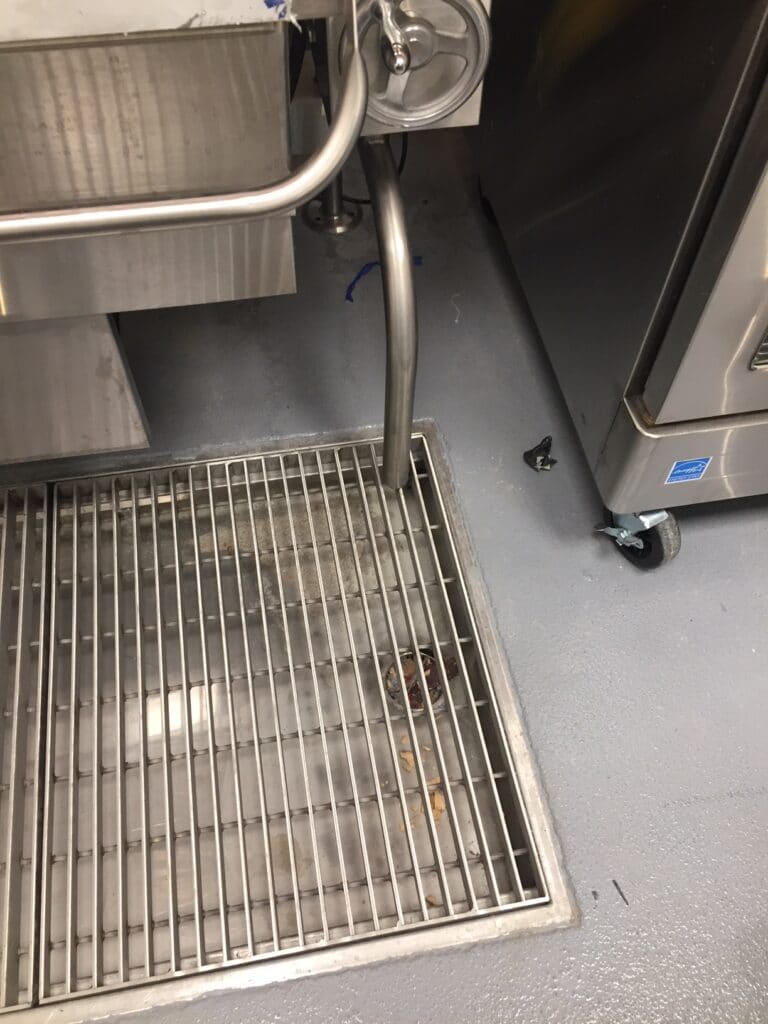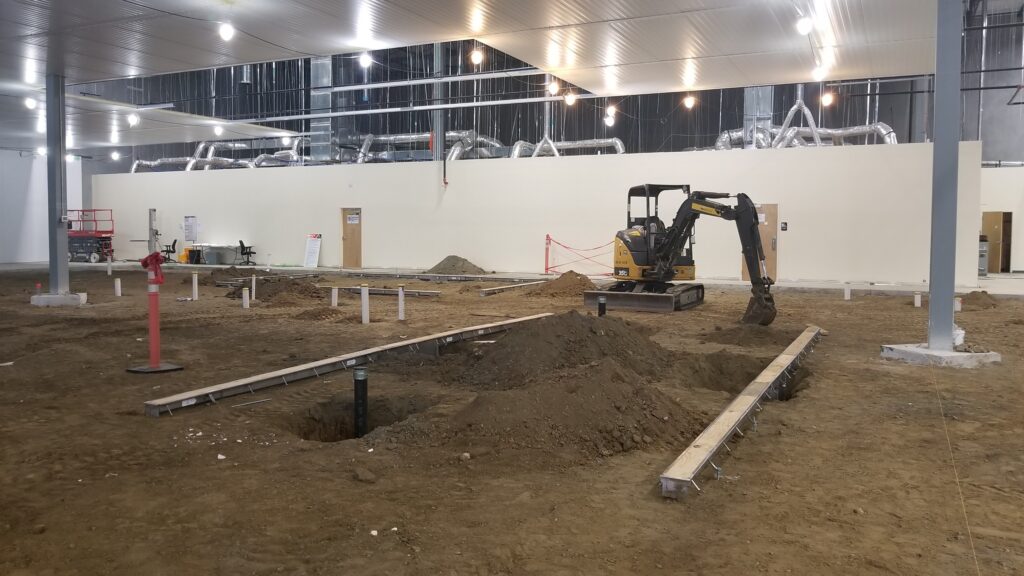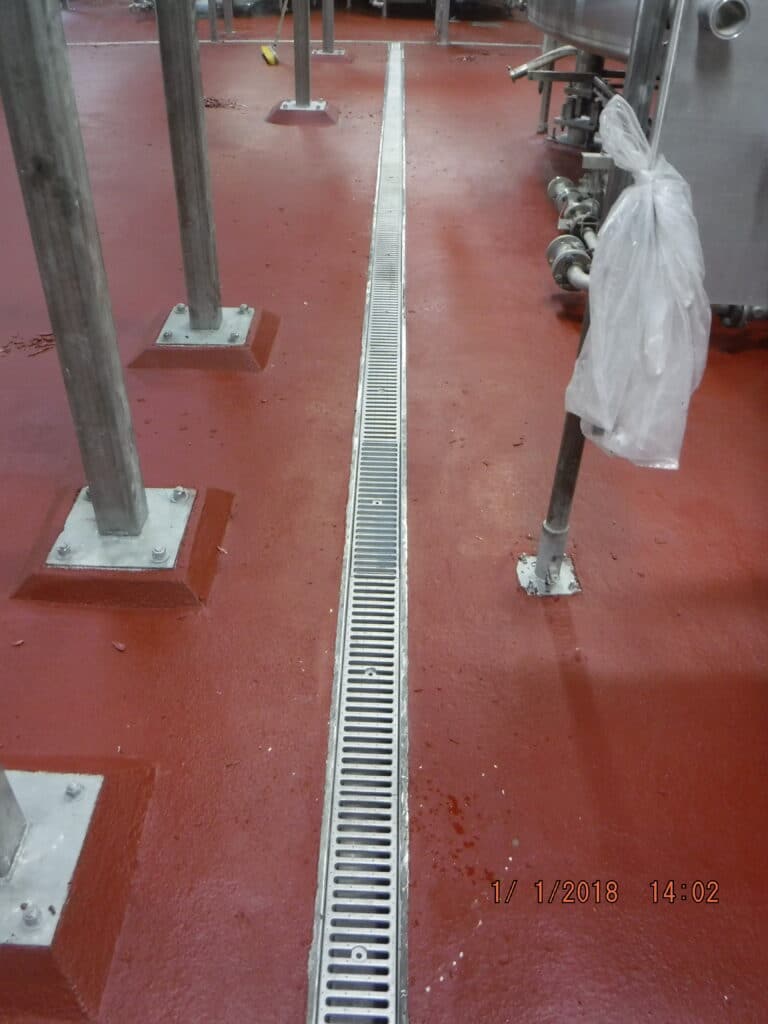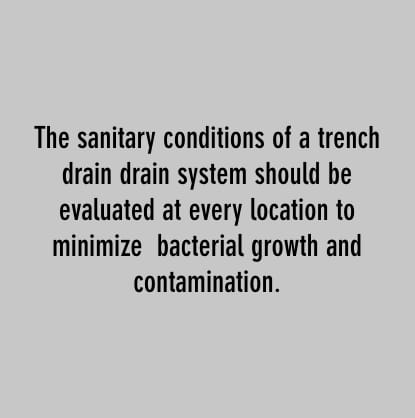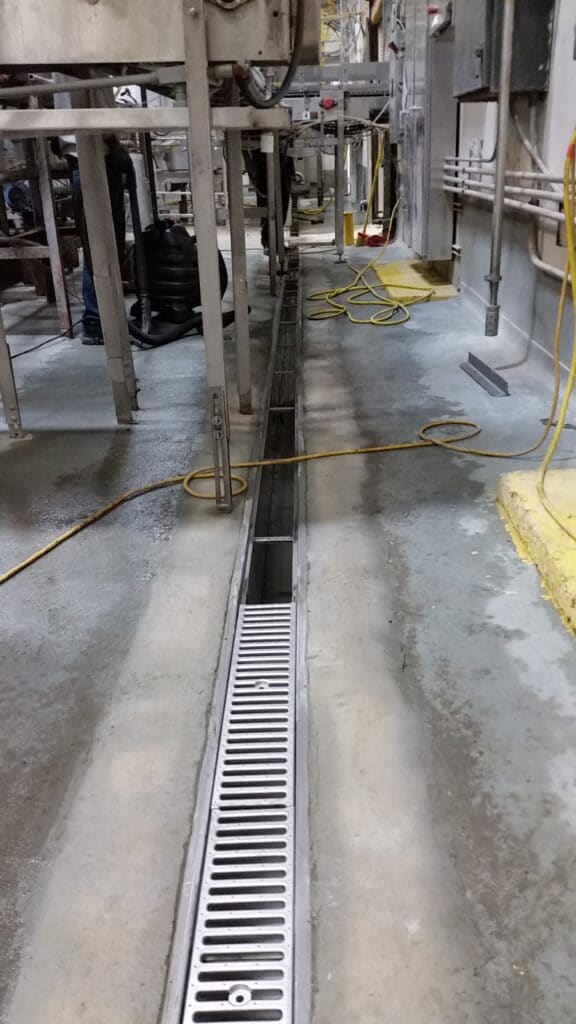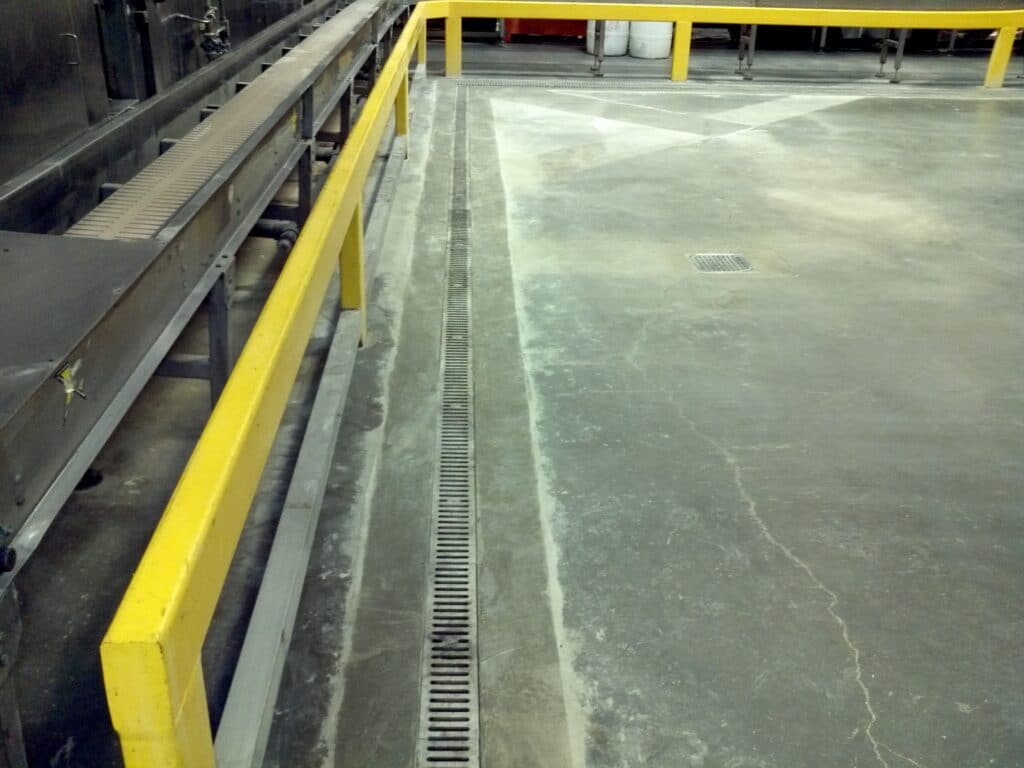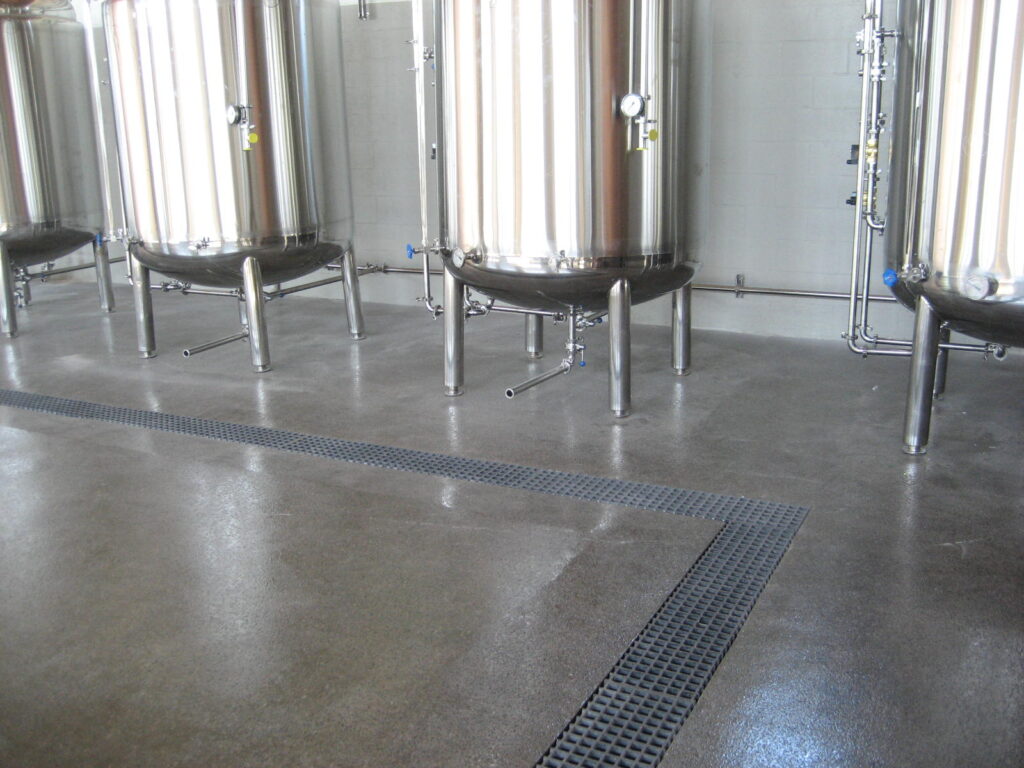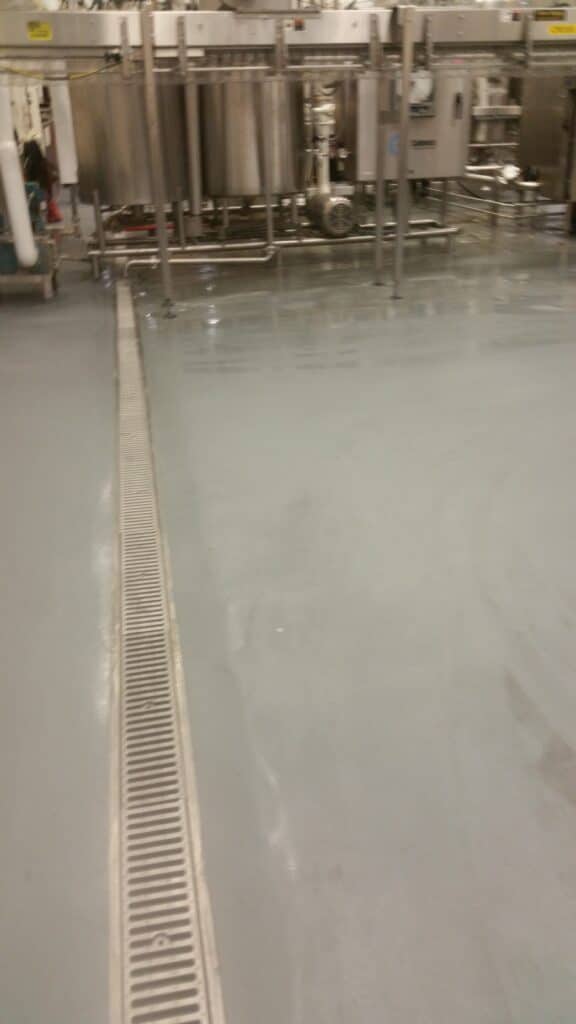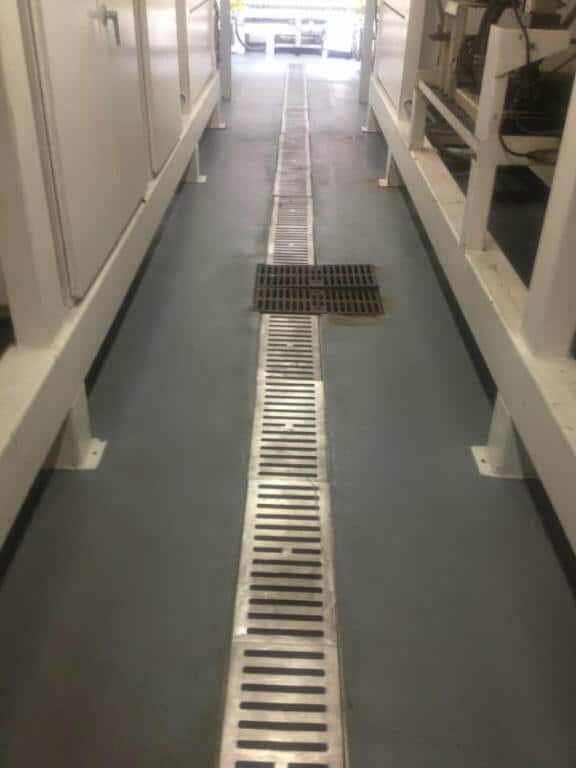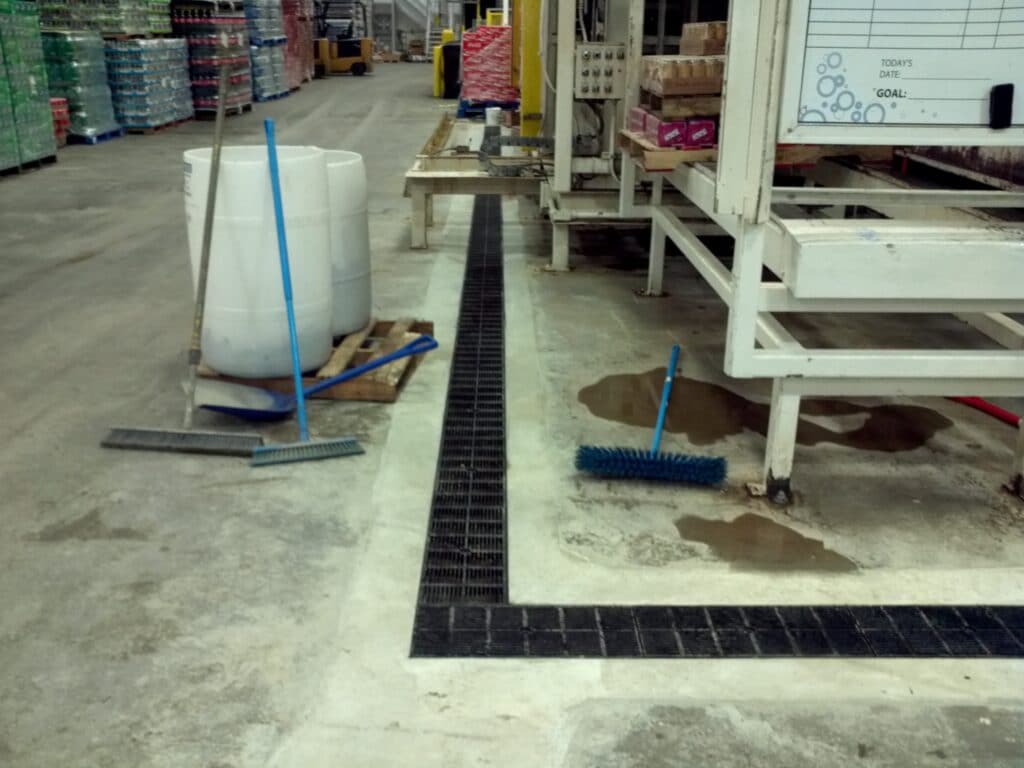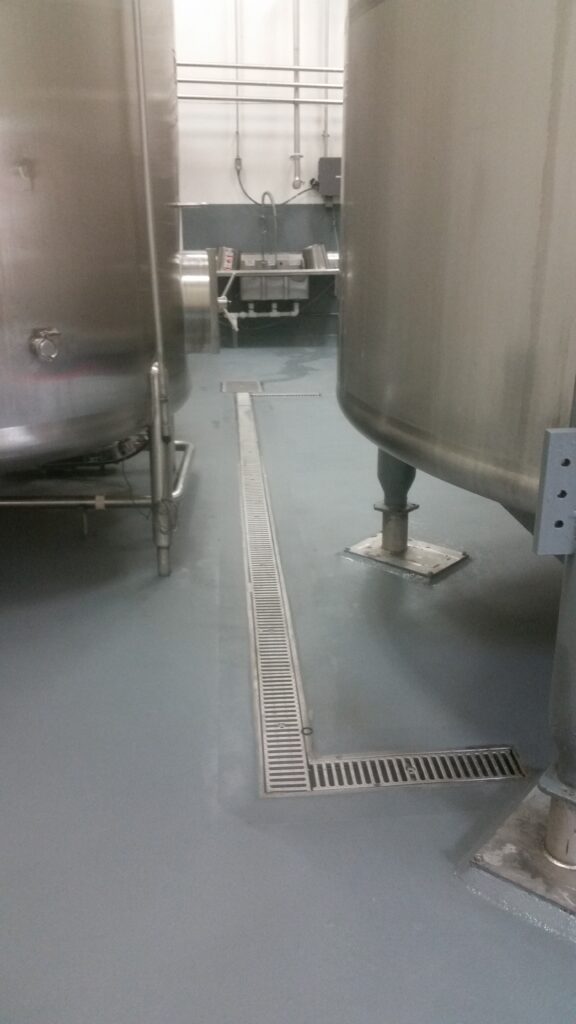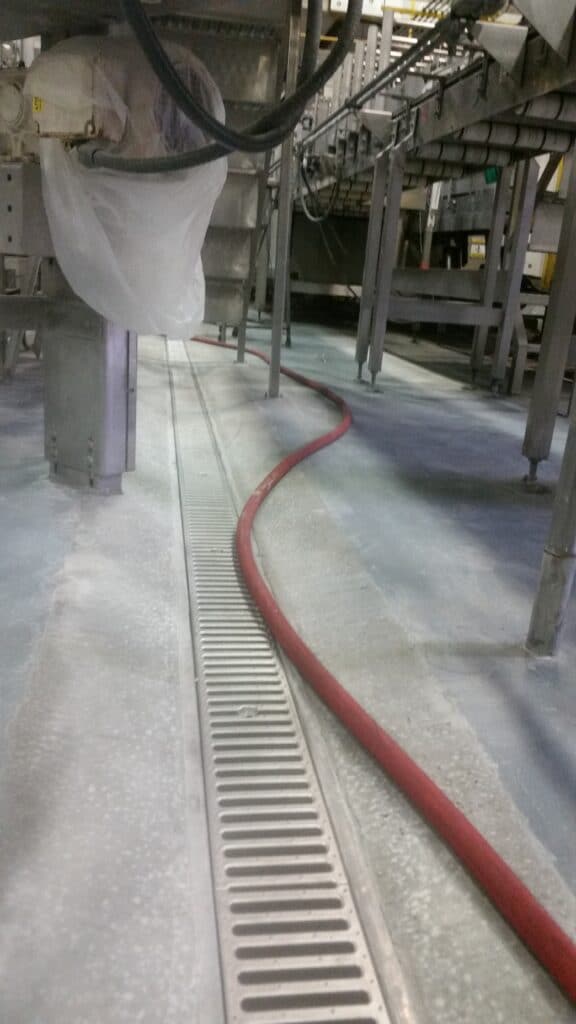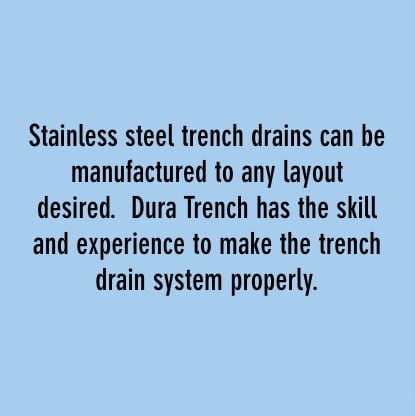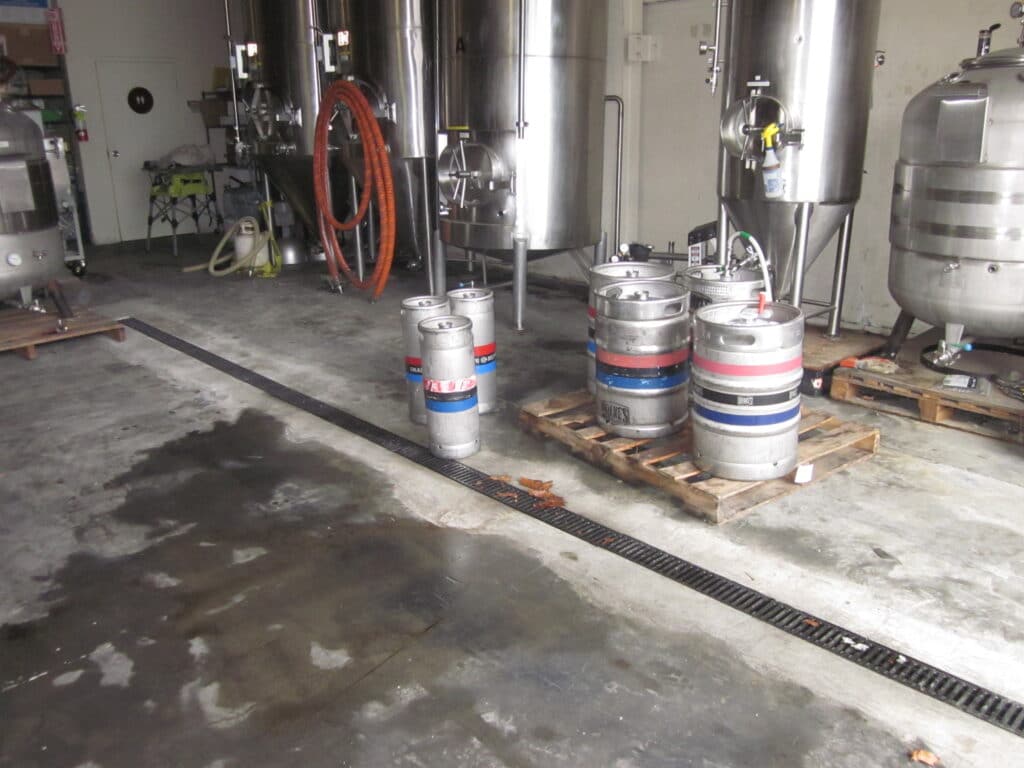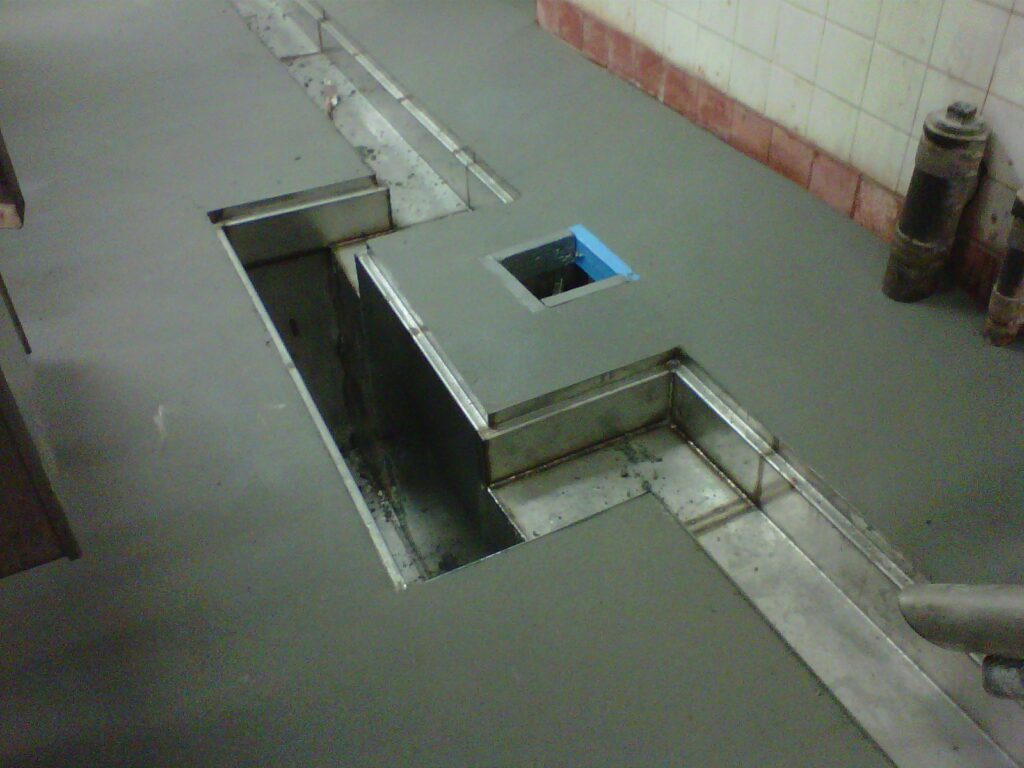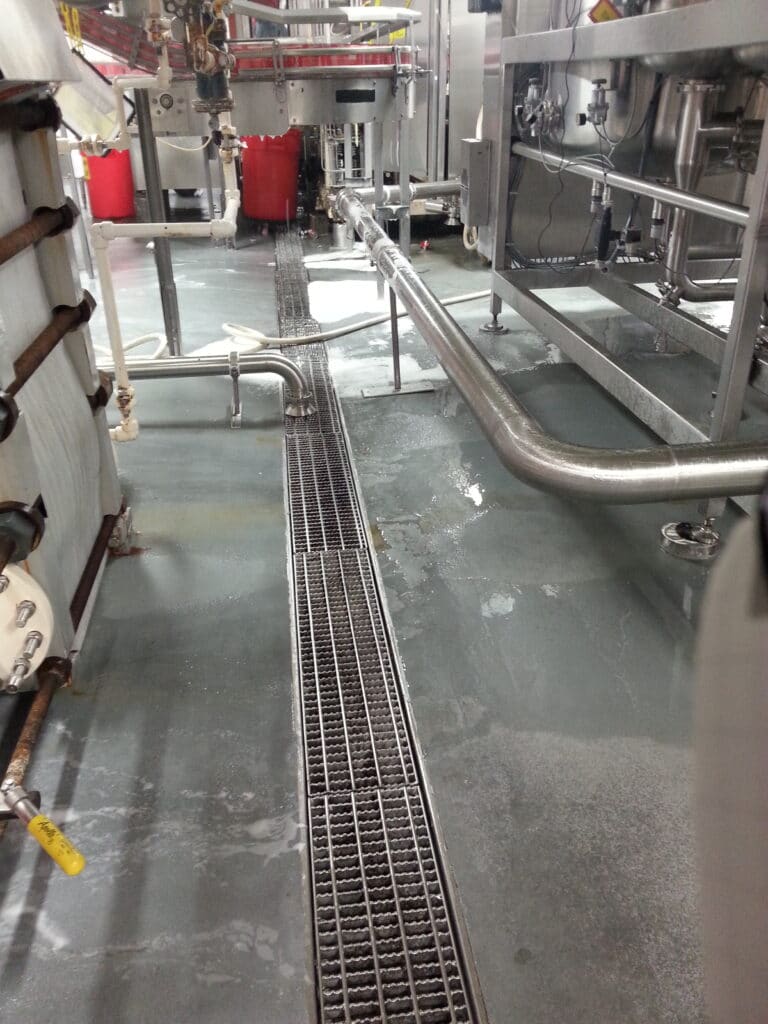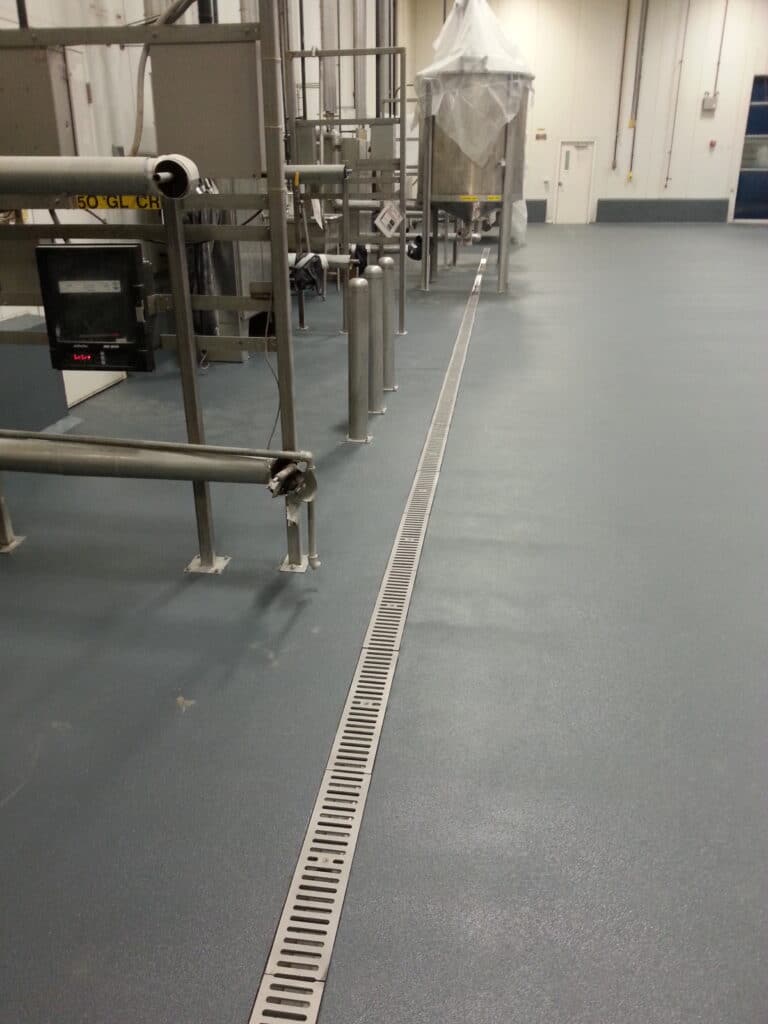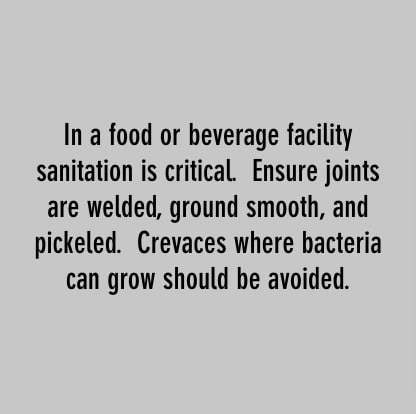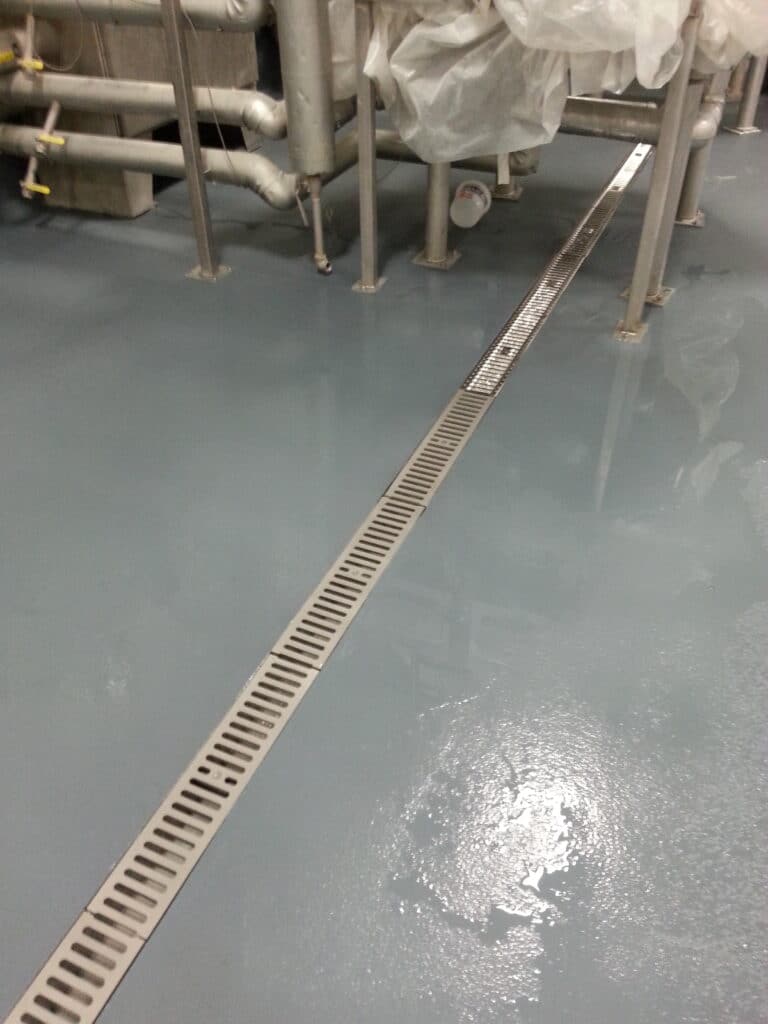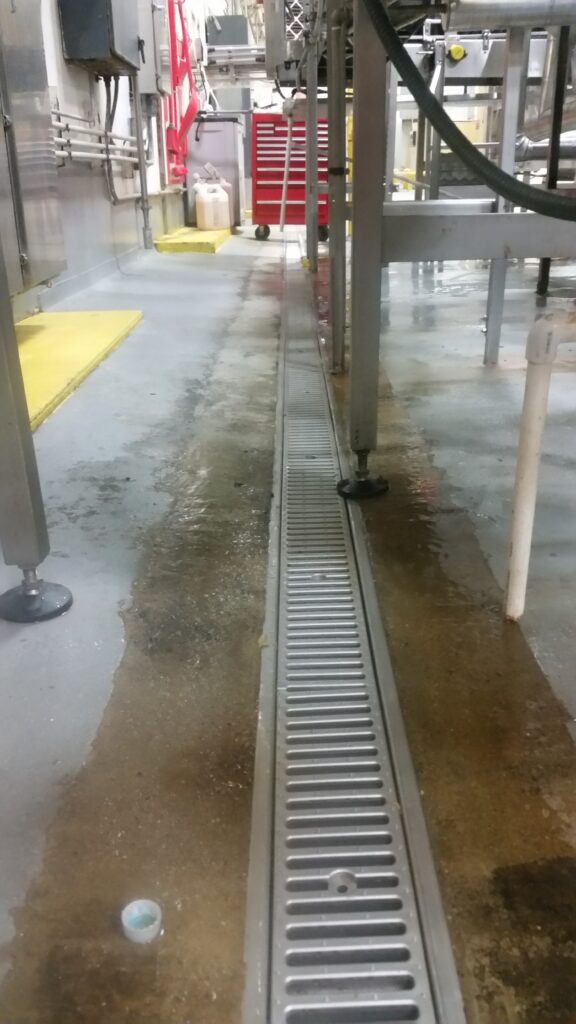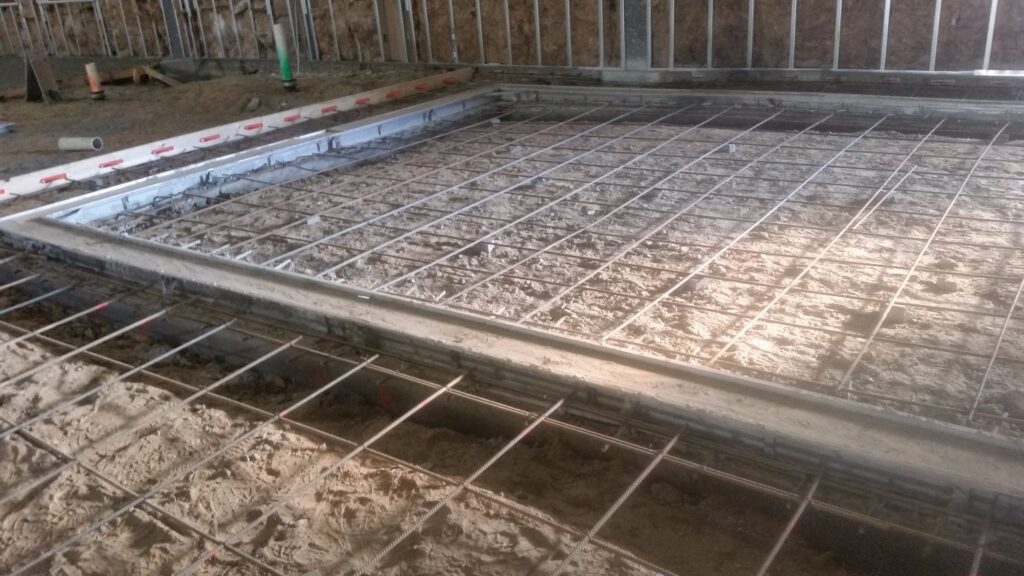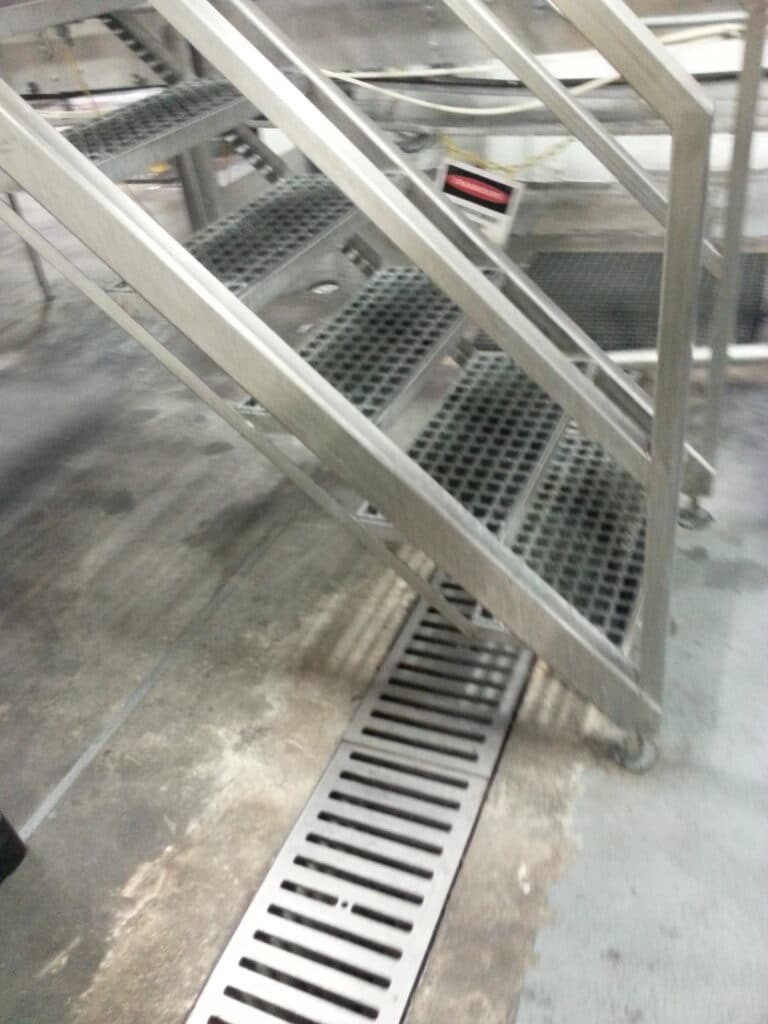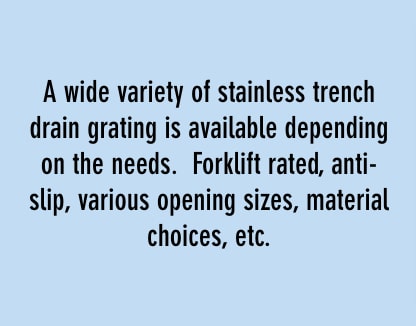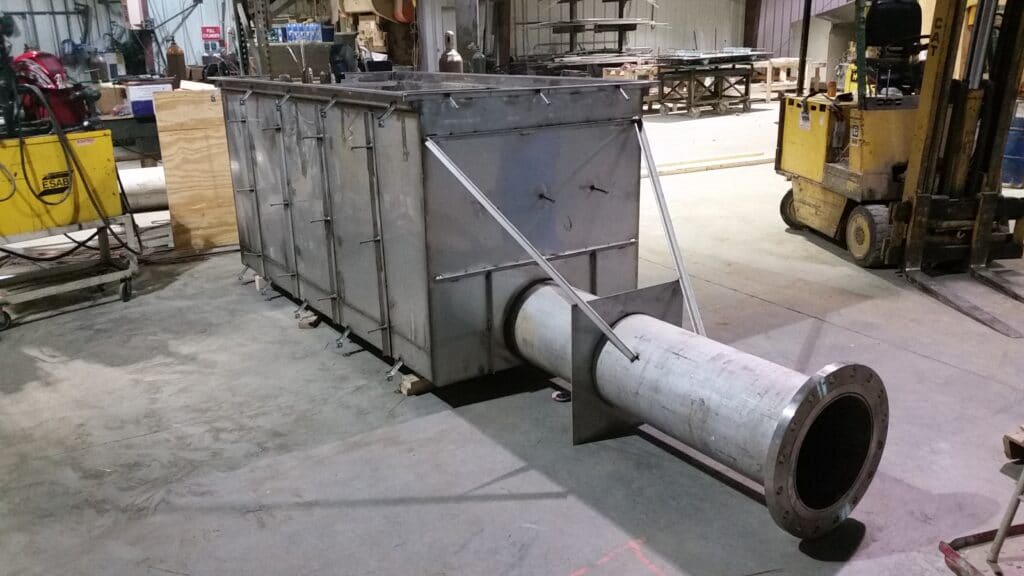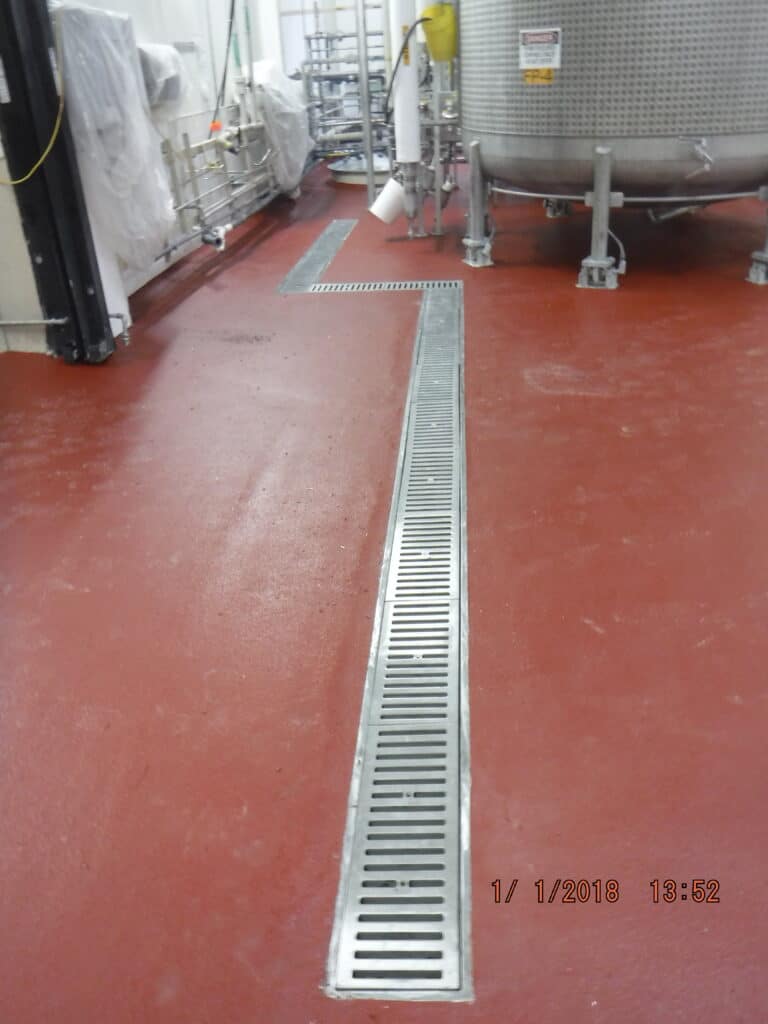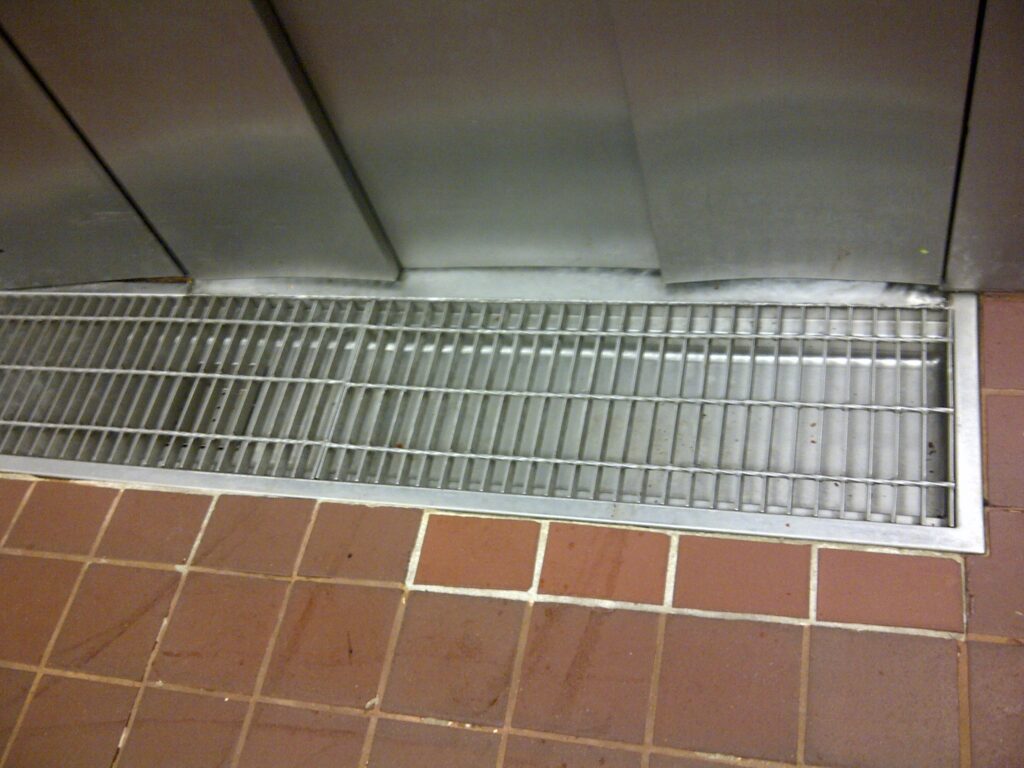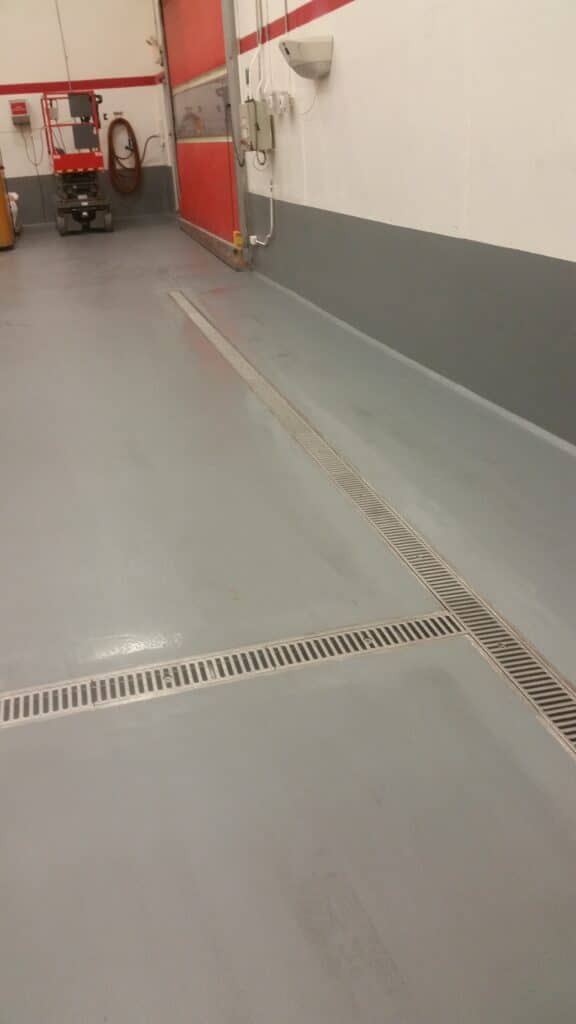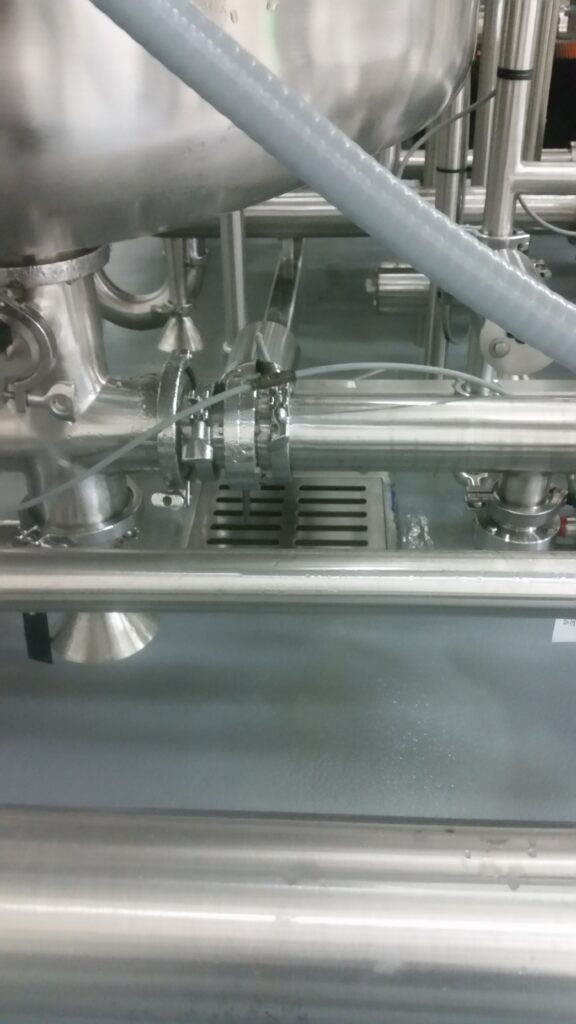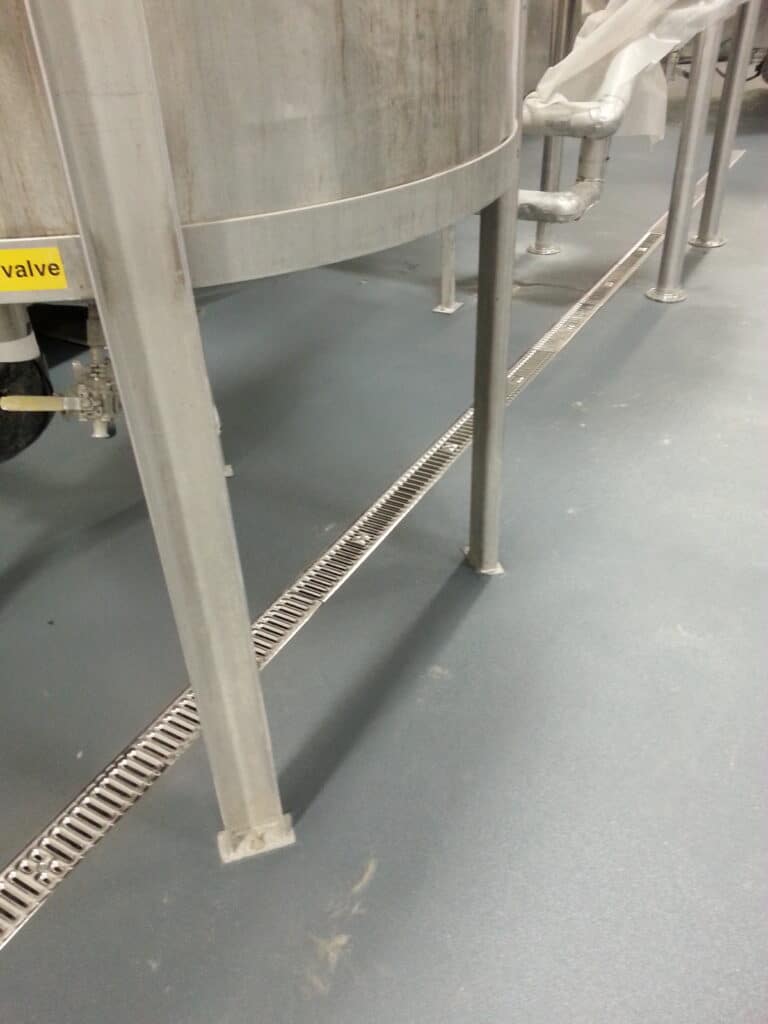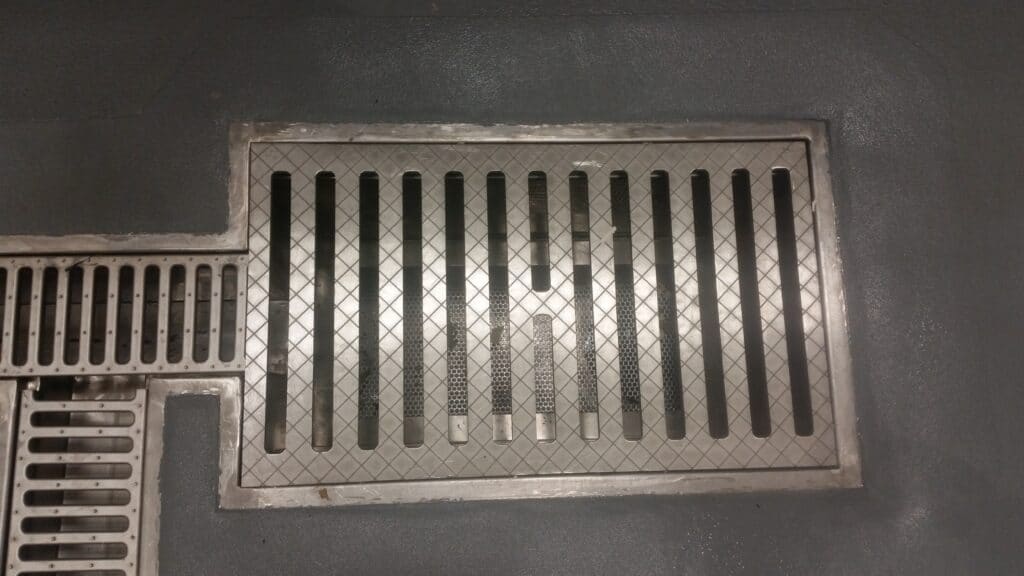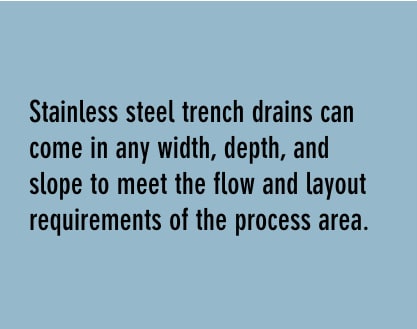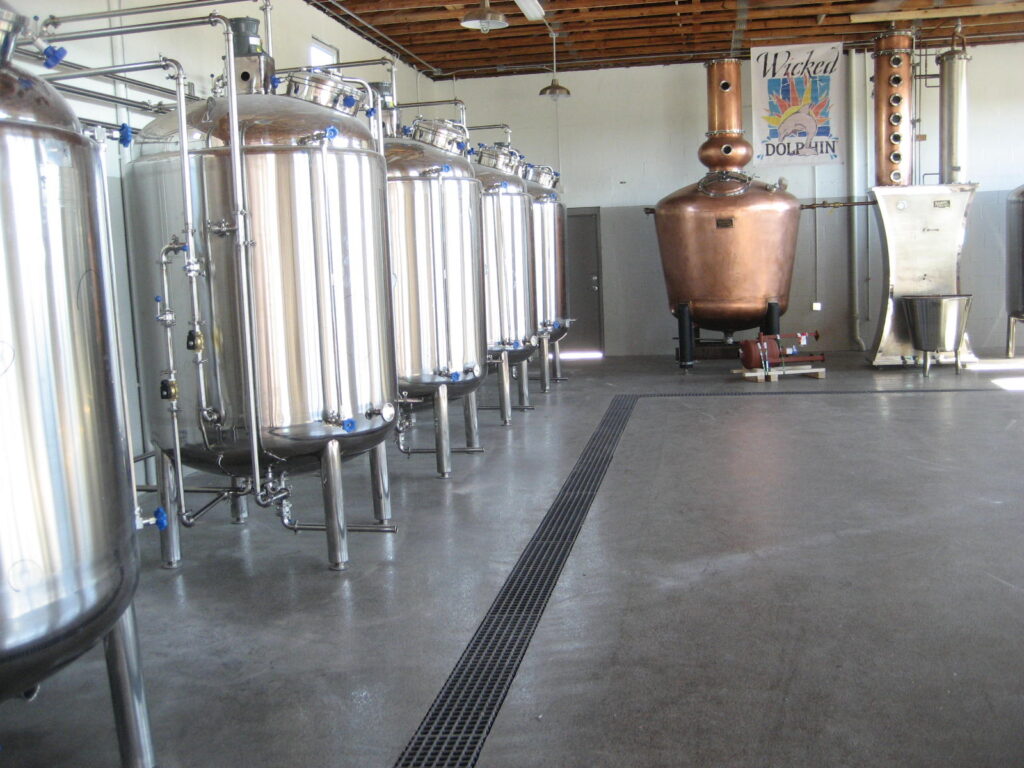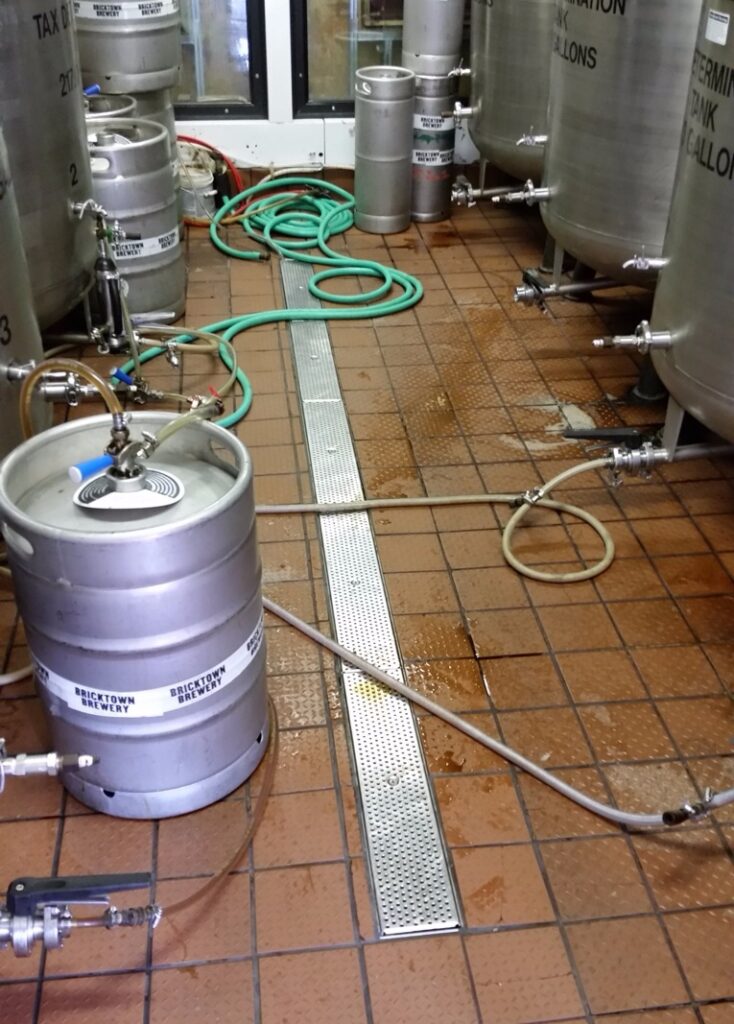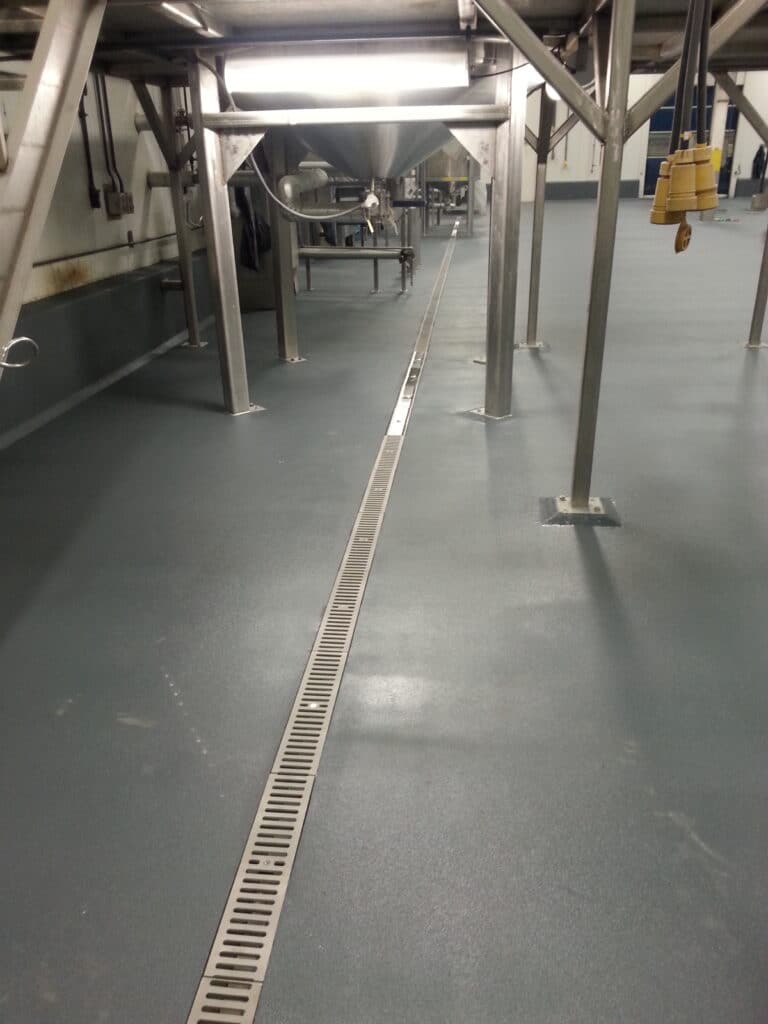Food Processing covers a broad variety of different processes. All of these process have some common ground. They are all required to be sanitary, almost all of them either have extreme hot and cold temperatures (thermal cycling), almost all have concentrated chemicals involved including but not limited to CIP, and there are generally areas of heavy fork truck traffic. All these conditions combined make this a harsh environment where trench drain materials must be carefully considered.
Trench Drains and Slotted Drains for Food and Beverage Facilities
Design Considerations
Sizing the drain
- The design capacity of the trench is determined by the fluid volume captured by the drain. The facility and processing equipment use water or solutions in the cleaning, processing, manufacturing, cooling, etc. When a machine finishes a process, it typically disposes of the fluid used in the process. Sometimes this is a large volume of water coming from a tank or large piece of equipment. The combined volume of these fluids plus any potential wash down water determines the size of the drain required for the application.
- Most areas in a food processing facility can use a 4″ I.D. drain. A 4″ drain can typically handle at least 350 gallons per minute. In some cases it is necessary to use a larger drain. For cost reasons these are usually limited to areas of high flow rates or header trenches that have multiple smaller trenches running into them.
- Larger trenches, 8″ and up, are typically reserved for applications where a storage volume is required for large vessels that may dump instantaneously. For instance, some facilities dump large tanks or kettles into a drain while the facility may only have a small piping system in that area. The pipe can only handle a small volume of fluid and therefore the trench would need to capture the remainder of the fluid off the floor until the pipe has time to evacuate the remainder of the fluid.
- Unless you have a similar storage issue as discussed above, be sure that the outlet capacity does not limit the flow of the drain. Outlet connections can be piped to catch basins, sump pumps, or the trench can run directly into the process or sanitary piping system. Make sure that any piping is sufficiently large to handle the given flow rate.
Choosing the channel
- First select the appropriate size trench drain based on the flow rate.
- The most common trench types used are fiberglass and stainless steel. Both products are non-absorptive, very smooth, and very sanitary.
- Trench drains in food processing facilities should not allow non-sloping channels. Many manufacturers want to use these to extend the length of their system to accommodate long runs in the facility. When non-sloping channels are used it allows chemicals, food bits, and sugars to sit in one location and eat away at your trench in any locations that are improperly sealed. This can also pose a problem with health inspectors if there is any standing water. Standing water in trench drains will promote the growth of bacteria and microbes such as listeria. We recommend a 1/4″ per foot fall in food processing facilities where possible.
- It is a good idea to use a trench channel that has a radius bottom. The radius bottom will help reduce the accumulation of food particles and debris by increasing flow velocities in the bottom of the channels. The radius bottom will also ensure a minimum amount of fluid standing in the channel at any given time.
- Be aware of the dynamic loads that can be placed on these systems. Fork trucks have hard tires that can exert severe point loads. Often turning or breaking on the trench grates can transfer severe loads through the grates and into the frame on top of the channels. A heavy duty rail or frame is essential in all fork truck areas. The frames/rails need to be anchored at regular intervals. One of the most common system failures is lack of anchors on the rail/frames. The rail should have sufficient bearing area under it to support the entire load of the grate. Several studies have been done that show the bearing area under the grate to be one of the leading causes of trench drain failures. Learn more about loading and material properties of grates and channels.
- Sealing channel joints is critical in this application. If caustics, sugar, or other chemicals are allowed to get between the joints you will not be able to eliminate the odor or bacteria and it can deteriorate the concrete behind the channels. If you want the joints properly sealed you must specify such and stress to the contractor that this be done properly. Metal channels should be welded together with a continuous water tight bead and then ground smooth. Fiberglass channels should be properly prepared by roughing up the joint and then using an appropriate two part (epoxy) sealant. HDPE channels should be welded together with a continuous heat welding process.
- Most food processing facilities have a problem with thermal expansion. Rapid temperature changes are experienced during sanitation, when steam or hot liquids are dumped on a cooled floor, when freezers are defrosted for cleaning, etc. During these events materials can expand and contract very rapidly due to these drastic changes. The trench channels in these applications need to be able to handle the temperatures, but also need to expand and contract at relatively the same rate as the concrete. These thermal cycles can eliminate thermal plastic materials as an option for many facilities.
Selecting the grate
- Grates for food processing applications need to be chemical resistant and easily cleaned for most areas. The most common grate materials for food processing applications are stainless steel, fiberglass, and ductile iron. Stainless is the most expensive, but has the best strength, corrosion resistance, and is the most sanitary. Stainless or ductile iron are typically used where fork trucks will be present although there are fiberglass grates that can handle fork truck traffic. Fiberglass is a good choice in areas where there will be foot traffic on a wet floor because it typically comes with a nonslip grit on it’s surface. This nonslip grit is available in stainless but it is expensive. Ductile iron is the least expensive choice having good durability even with chemicals but it will eventually deteriorate. Iron grates will turn a rusty brown color when exposed to prolonged exposure to chemicals and wet environments. Even though they will not deteriorate, some find iron grates to be less appealing in applications where sanitation is critical. Iron grates are found more often in packaging and warehouse areas of the plant versus areas where food may be exposed to the environment.
- Openings in the grates can either be small or large. The decision has to be made whether you want the debris to flush through the system or if you want to keep the debris on the floor to be cleaned up above ground. Many facilities prefer to wash everything into a catch point where a basket can be used to collect debris. In some cases this can cause problems with plugging the system and the debris needs to be collected on top of the drain system.
- In traffic areas be sure the grates are properly anchored. Be sure that any removable grates are anchored into place with stainless steel anchors. If you use a plastic or other metal the anchors will degrade over time.
Designing the layout
- Ensure that no flat bottom (neutral) trench sections are used.
- The depth of the system that you are going to use can conflict with piping and other buried utilities. Check the plans and if necessary use ground penetrating radar to determine what is present before designing the system.
- Outlets should be placed to minimize piping and overall system depth. The longer a run is before an outlet pipe, the deeper it gets. Excessive depth increases installation costs.

